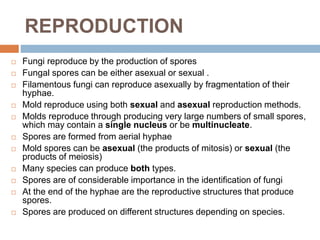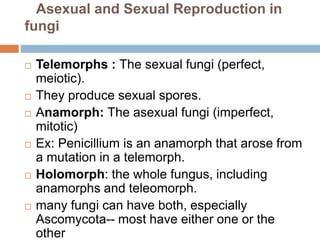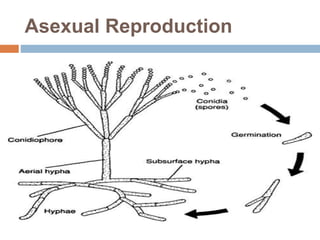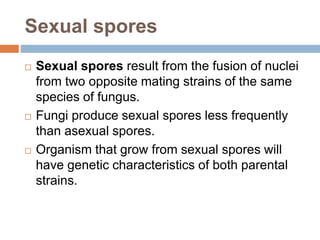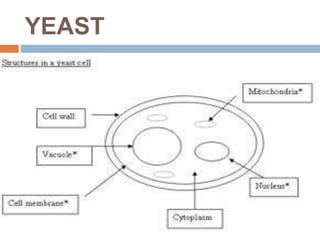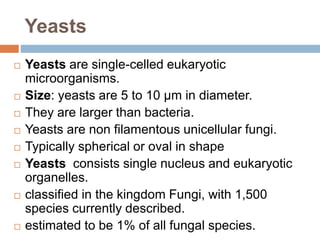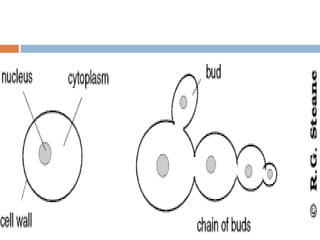The document provides an overview of fungi as a kingdom within the five-kingdom system of life, detailing their characteristics, classifications (yeasts, molds, and macroscopic fungi), and reproductive methods. Fungi are eukaryotic organisms that lack chlorophyll, obtain nutrients through absorption, and play a crucial role in decomposition. It also discusses their structural components, growth requirements, and ecological significance, highlighting their role in human and plant diseases.
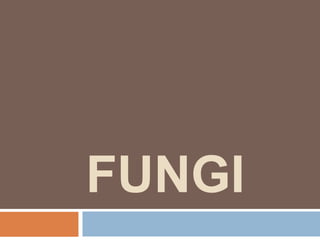


































![Growth of mold
Development of fungi cultures usually begins with
a spore.
In the presence of moisture, the spore swells with
water much like a germinating Plant seed.
Then the spore wall expands through a preformed
weak spot [the germ pore] to create a thin,
balloon-like protuberance.
This first extension of growth is called a hypha
resembling long, worm-like structures.
With continued growth, the hyphae will branch
and grow into a visible colony called a
"mycelium.“](https://image.slidesharecdn.com/fungiclass2014-170712174440/85/Fungi-36-320.jpg)














